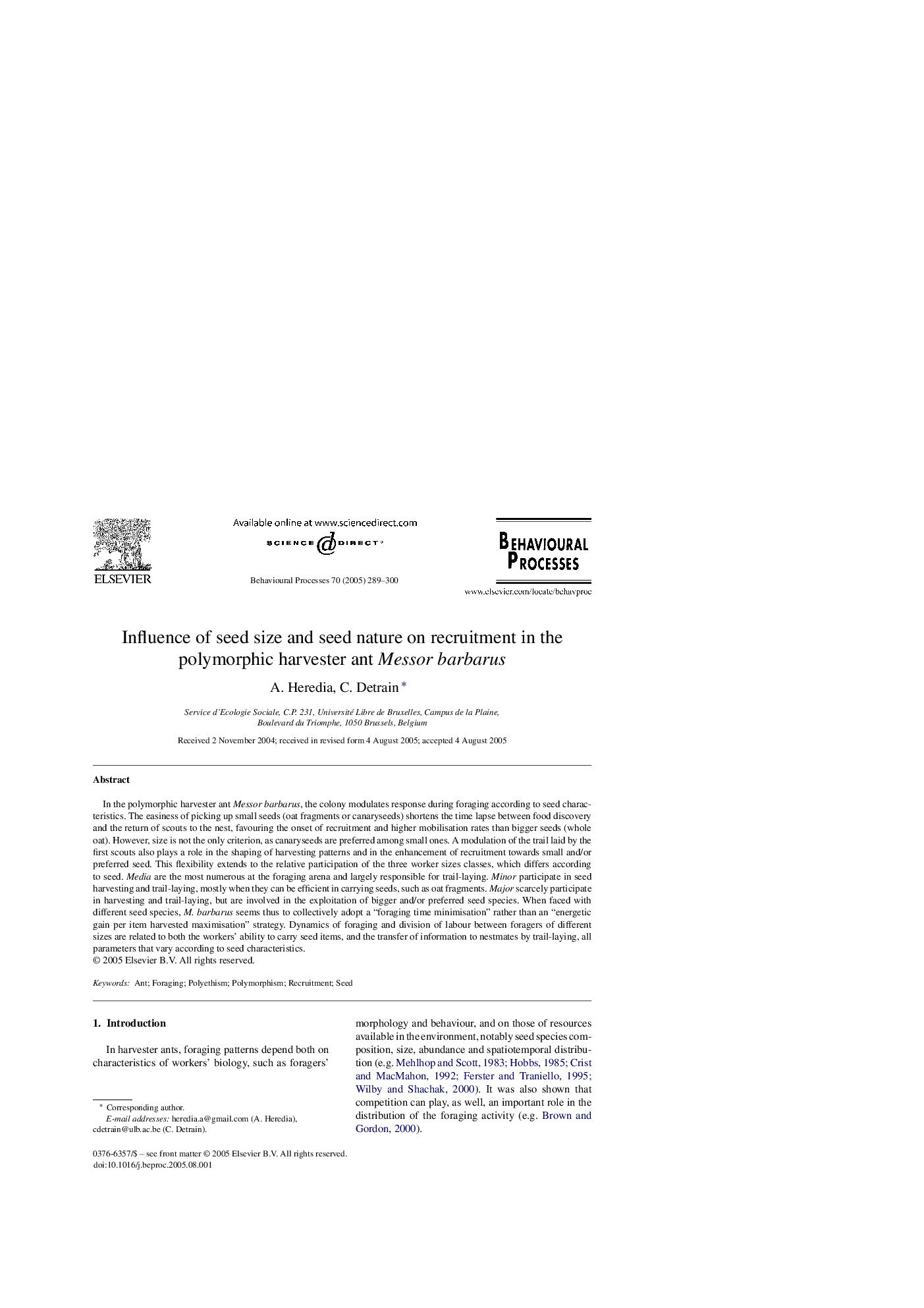| Article ID | Journal | Published Year | Pages | File Type |
|---|---|---|---|---|
| 8977359 | Behavioural Processes | 2005 | 12 Pages |
Abstract
In the polymorphic harvester ant Messor barbarus, the colony modulates response during foraging according to seed characteristics. The easiness of picking up small seeds (oat fragments or canaryseeds) shortens the time lapse between food discovery and the return of scouts to the nest, favouring the onset of recruitment and higher mobilisation rates than bigger seeds (whole oat). However, size is not the only criterion, as canaryseeds are preferred among small ones. A modulation of the trail laid by the first scouts also plays a role in the shaping of harvesting patterns and in the enhancement of recruitment towards small and/or preferred seed. This flexibility extends to the relative participation of the three worker sizes classes, which differs according to seed. Media are the most numerous at the foraging arena and largely responsible for trail-laying. Minor participate in seed harvesting and trail-laying, mostly when they can be efficient in carrying seeds, such as oat fragments. Major scarcely participate in harvesting and trail-laying, but are involved in the exploitation of bigger and/or preferred seed species. When faced with different seed species, M. barbarus seems thus to collectively adopt a “foraging time minimisation” rather than an “energetic gain per item harvested maximisation” strategy. Dynamics of foraging and division of labour between foragers of different sizes are related to both the workers' ability to carry seed items, and the transfer of information to nestmates by trail-laying, all parameters that vary according to seed characteristics.
Related Topics
Life Sciences
Agricultural and Biological Sciences
Animal Science and Zoology
Authors
A. Heredia, C. Detrain,
